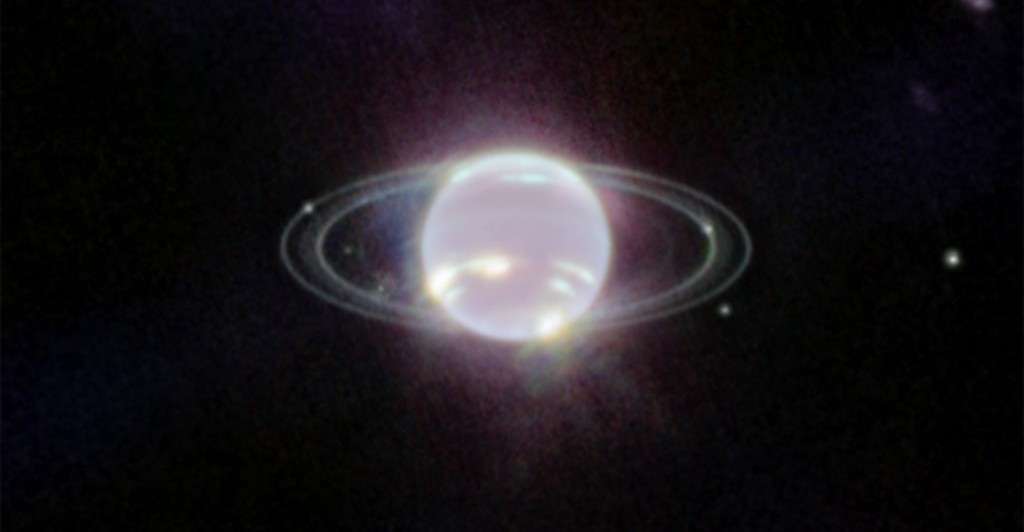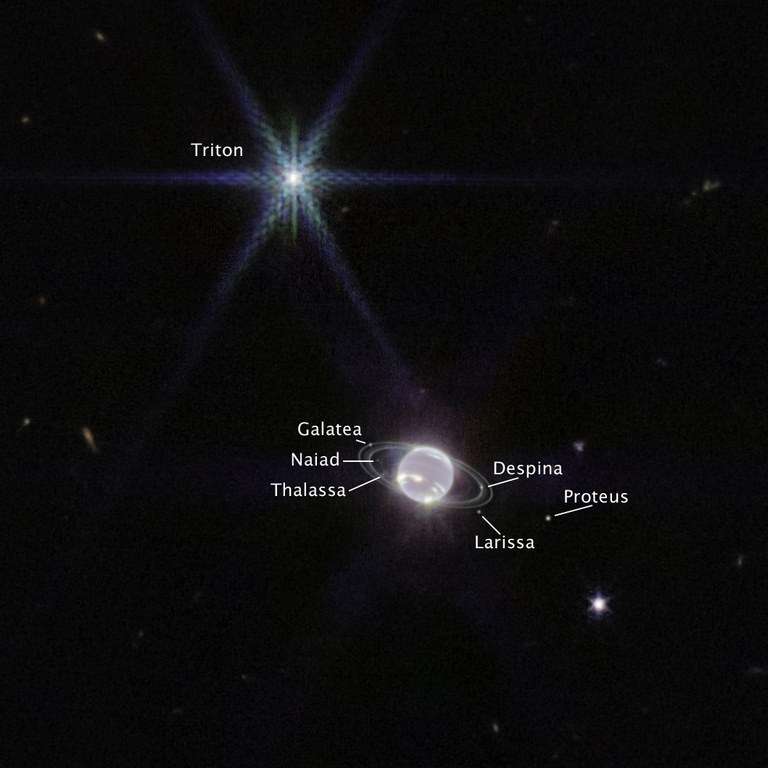Webb Telescope Captures Images That Move a NASA Scientist 'to Tears' - LOOK
It's finally here-the first images from the James Webb Space Telescope have proven worth it after a 30 year wait.

The James Webb Space Telescope is showing off its capabilities closer to home with its first image of Neptune, revealed on Wednesday.
Most striking about the new image is the crisp view of the planet's dynamic rings-some of which haven't been seen with this clarity, since the Voyager 2 flyby in 1989.
Webb's extremely stable and precise image quality also permits the observation of the very faint rings that are the closest to Neptune, and the planet's fainter dust bands farther out.
Another striking feature in this portrait of Neptune is a very bright point of light coming from Triton, the most unusual of the 14 known moons of Neptune, 7 of which can be seen in the image.
The telescope, an international collaboration with ESA (European Space Agency) and CSA (Canadian Space Agency), provides a unique perspective with its infrared sensitivity on our neighboring planets.
"Neptune has fascinated and perplexed researchers since its discovery in 1846," explains a press released from NASA. "Located 30 times farther from the Sun than Earth, Neptune orbits in one of the dimmest areas of our Solar System. At that extreme distance, the Sun is so small and faint that high noon on Neptune is similar to a dim twilight on Earth."
This planet is characterized as an ice giant due to the chemical make-up of its interior. Compared to the gas giants, Jupiter and Saturn, Neptune is much richer in elements heavier than hydrogen and helium.

This is readily apparent in Neptune's signature blue appearance in previous Hubble Space Telescope images at visible wavelengths, caused by small amounts of gaseous methane.
"Webb's Near-Infrared Camera (NIRCam) captures objects in the near-infrared range from 0.6 to 5 microns, so Neptune does not appear blue to Webb," the statement continues. "In fact, the methane gas is so strongly [absorbent] that the planet is quite dark at Webb wavelengths except where high-altitude clouds are present.
"Such methane-ice clouds are prominent as bright streaks and spots, which reflect sunlight before it is absorbed by methane gas. Images from other observatories have recorded these rapidly-evolving cloud features over the years."
Covered in a frozen sheen of condensed nitrogen, the moon Triton reflects an average of 70 percent of the sunlight that hits it. It far outshines Neptune because the planet's atmosphere is darkened by methane absorption at NIRCam's wavelengths.
Triton orbits Neptune in a bizarre backward (retrograde) orbit, leading astronomers to speculate that this moon was actually an object from the Kuiper Belt, a large asteroid belt that completely encircles our solar system, that was gravitationally captured by Neptune. Additional Webb studies of both Triton and Neptune are planned in the coming year.
Neptune's 164-year orbit means its northern pole, at the top of this image, is just out of view for astronomers, but the Webb images hint at an intriguing brightness in that area. A previously-known vortex at the southern pole is evident in Webb's view, but for the first time Webb has revealed a continuous band of clouds surrounding it.
TAKE This To Social Media And See How Many Friends Knew Neptune Had Rings…
Be the first to comment